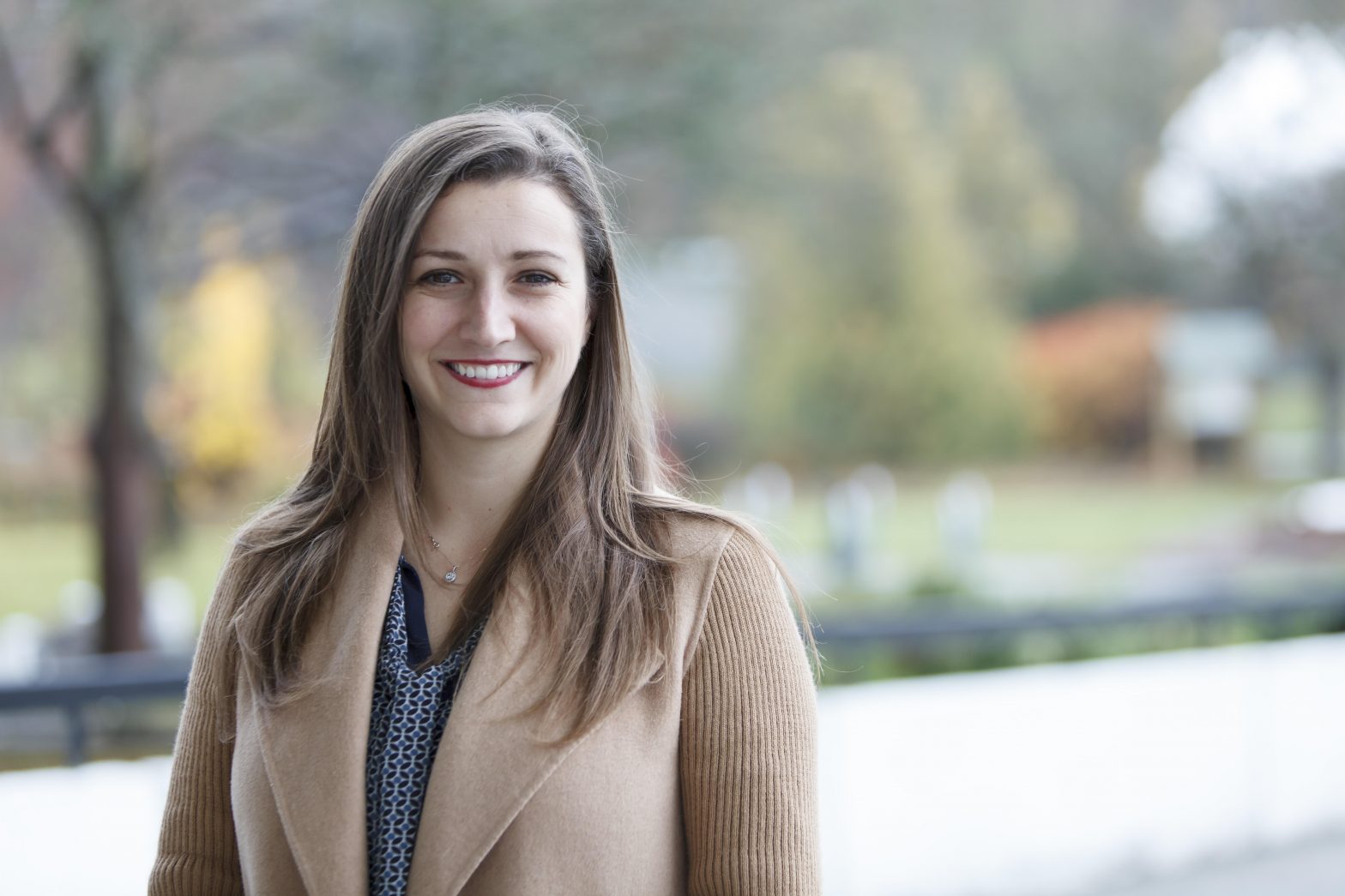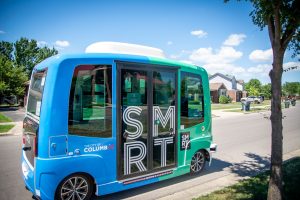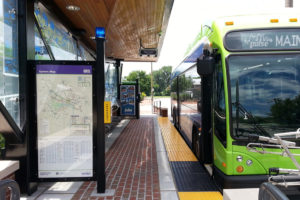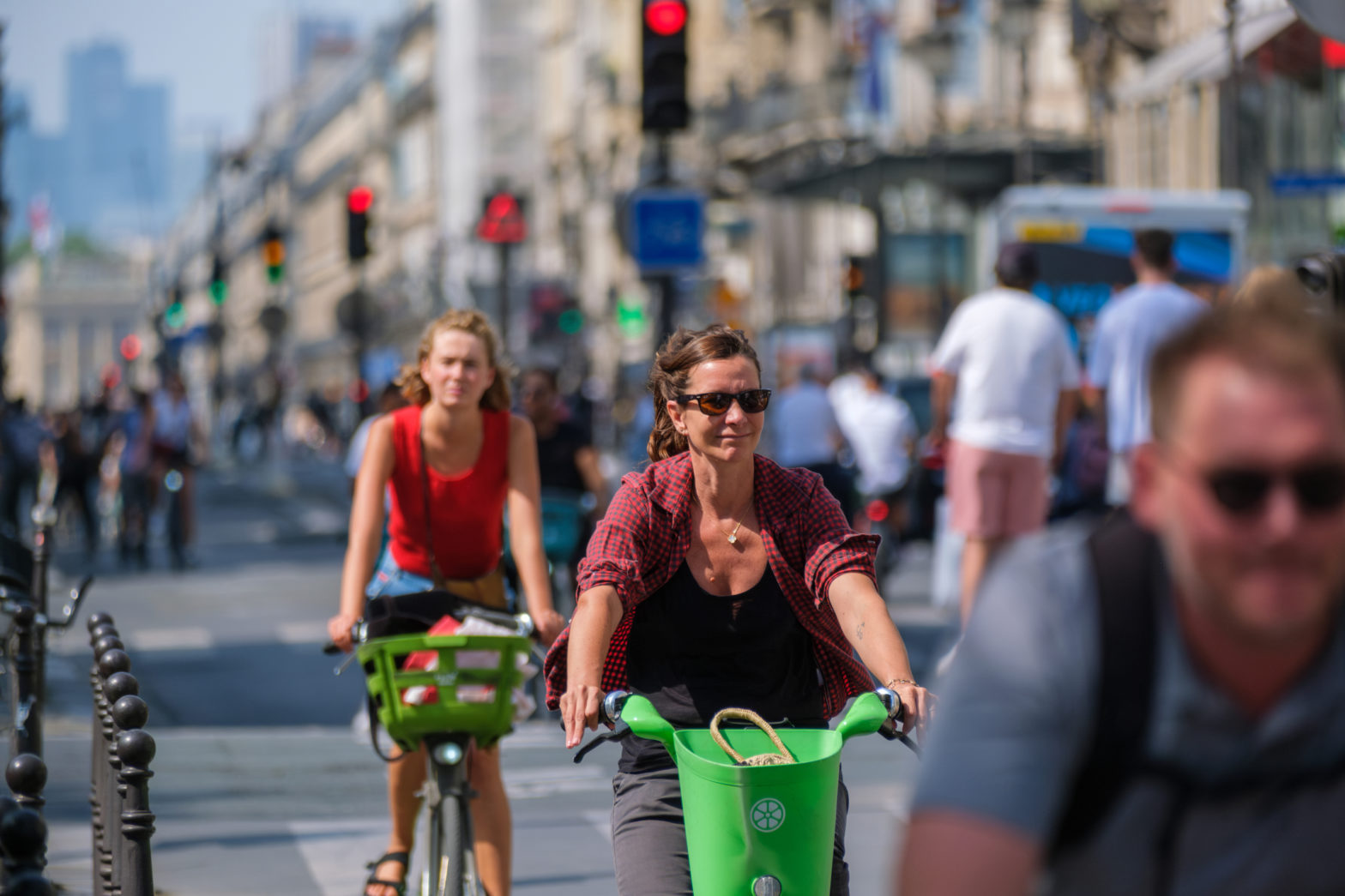
US cities are riding the next wave of mobility innovation
14 April 2022
by Christopher Carey
At a recent Cities Today Institute event in Columbus, US mobility leaders reflected on what they have learned from recent innovation efforts and looked ahead to what’s next.
The financial impact of COVID-19, coupled with a need to boost equity and reduce emissions, has put unprecedented pressure on already limited resources in US cities, and compelled leaders to think outside the box.
The wave of active travel initiatives that sprung up at the onset of the pandemic – from pop-up bike lanes to expanded pedestrian zones – has shown that change is possible, and allowed cities to reimagine how their transport systems can boost liveability and improve the welfare of residents.
Cities are now looking to build on what they have learned to drive further improvements.
In 2016, Columbus, Ohio won the US Department of Transportation’s Smart City Challenge – a US$50 million project which saw it roll out a series of mobility innovations to connect residents and improve equity across the city.
Projects included an app to pay bus and ride-hail fares, a smart parking system, an autonomous shuttle service, electric vehicle (EV) adoption initiatives and Wi-Fi-enabled kiosks to help residents plan trips.
Jordan Davis, Executive Director, Smart Columbus, said: “Cities have piloted a lot, proofed out and they are ready to scale – but people are still hungry to try things that haven’t yet been proven.”
In the midst of this wave of innovation, COVID-19 forced a rethink of how the city operates and some services, like the Linden Leap autonomous shuttle, shifted from transporting people to moving food and medical supplies.

The Smart Columbus programme wrapped up in June 2021, yielding both positives and negatives – but overall, the city says it proved to be an invaluable learning experience.
“The Smart Columbus programme spurred a lot of conversation and pilot activities around a full portfolio of connected, autonomous and shared mobility solutions,” said Davis.
“I think it brought forward what’s ready to scale and also ground-truthed a lot, showing there’s still work to do.
“The future is bright – people are looking towards what they can do to advance their cities moving forward, and the technology and use cases are more mature than they have been in years.”
Since winning the challenge the city expanded its public EV charging network, and currently has 914 charging stations.
“I think our electrification programme, and establishing the ecosystem for EV adoption, is by far the most robust programme that we’ll continue to develop,” added Davis.
LinkUS
The creation of a safe and equitable transit ecosystem that benefits Columbus as a whole has become a driving force in policy, and a wider collaborative effort has been underway in the region to make this a reality.

It is expected that by 2050 one million more people will live in the Central Ohio region, which has prompted a multi-agency approach to ensure growth isn’t confined to silos.
With this in mind, the City of Columbus, together with the Central Ohio Transit Authority (COTA), Franklin County and the Mid-Ohio Regional Planning Commission (MORPC), developed the LinkUS programme – a collaborative partnership to boost long-term growth in the region.
The programme will seek to provide equitable mobility options for residents and visitors, ensure access to jobs and affordable housing, promote economic growth and improve sustainability.
This will include high-capacity and advanced rapid transit, improvements to bikeways, green space, roadways and pedestrian areas, and development along key regional corridors throughout Central Ohio.
“LinkUS is the culmination of many years of planning efforts for the Central Ohio Region,” said Kimberly Sharp, Senior Director of Development at COTA.
“Analysis established by MORPC and the ULI (Urban Land Institute) Columbus brought forward the realities of either continuing to grow as we have been – sprawl – or rethinking how we grow as a region for a more sustainable future.”
Vision Zero
Road safety has been another area of concern, with the number of fatal crashes in the city doubling since 2015.
In March 2020, Columbus announced the creation of a Vision Zero campaign to reduce vehicular and pedestrian traffic deaths.
The two-year action plan committed a minimum US$10 million investment and started on 1 April, 2021, with the city making a number of adjustments to its busiest corridors, including the installation of crosswalks and encouraging drivers to slow down by extending kerbs and converting one-way streets to two-way.
“There are three main contributors to traffic fatalities [in Columbus] – speed, distraction and drunk/drugged driving,” said Mandy Bishop, Deputy Director of Public Service, City of Columbus.
“Since 2015, we have seen more people driving too fast, looking at their phone and driving while impaired.
“Unfortunately, as community violence increased we have also seen increases in traffic violence.”
Data rich
As transit agencies navigate a range of operational, environmental and technical challenges, digital technology is spurring innovation.
Tammy Chellis, Senior Manager for Global Cities, Transit and Infrastructure at Accenture, said: “I think there are two common themes: one is really around data – cities are data rich, but access poor.
“Then there’s the open-source aspect, asking how are cities helping each other and using that sense of community and collaboration, learning through pilots and really building on that.”
This message was echoed by Bill Baver, VP – Smart Platform, NTT.
“Data is critical – people can’t keep working off of gut feelings, they need information to justify decisions for themselves and to their consumers, as well as the wider municipality and government agencies.”
Universal basic mobility
Providing equal mobility opportunities for all residents regardless of income has become a hot topic in recent years. In Los Angeles, the city’s Department of Transportation (LADOT) has launched a ‘Universal Basic Mobility’ (UBM) pilot using US$13.8 million in STEP grant funding from the State of California Climate Investment Program.
City officials also approved an additional US$4 million in funding to enhance the scheme.
The pilot will integrate access across existing and new transportation options, introduce new shared mobility options for residents and workers, expand and integrate fare payment subsidies, and expand electrification to advance Universal Basic Mobility for South LA residents.

And as the city gears up for the 2028 Olympic games, transport leaders see this as the perfect time to implement lasting changes.
“I think the games are an opportunity to attract the kind of global innovation that we can’t otherwise [attract],” said Seleta Reynolds, General Manager of LADOT.
“Viewing this through that lens of investment that [can] lift people up, and the value that transportation investments can have to restore dignity to people’s lives, is a powerful framing.”
Coding the streets
Los Angeles was one of the founding members of non-profit organisation the Open Mobility Foundation (OMF), which was created to support the development of open-source standards and tools for cities.
The OMF currently governs the Mobility Data Specification (MDS), a data-sharing standard that facilitates the exchange of anonymised data between transport operators and municipal transport departments, and the recently launched Curb Data Specification (CDS), which provides a mechanism to express kerb regulations, measure activity, and develop policies to optimise space usage.
“There’s a shifting conversation about digital infrastructure that isn’t just about information that we glean from these new tools like the MDS or the CDS, but actually begins to create a toolbox that will allow us to express city policies – whether that’s about kerb regulation, or who can use the public right of way and when, and moderating conflicts between e-scooters and pedestrians,” said Reynolds.
“We really have to have those digital tools because the metaverse is here and many companies are already speaking this language, and we need to speak it to them if we’re going to be able to advance all of the best ideas that are coming out of the private sector in a way that the public feels confident is going to be safe and equitable, and is going to solve real pain points for them.”
The role of the private sector in facilitating an open-source future has been key to the creation of both the MDS and CDS, with collaboration seen as a driving factor behind its creation.
“Cities that work together are more powerful. They are literally the interface between every human being and the world,” said John Ellis, President, Lacuna Technologies.
The company was at the forefront of the creation of the MDS, working closely with LADOT to build the open-source tool.
“For us, its exciting because micromobility was first, but other trends are quickly emerging.
“It doesn’t matter if you’re a scooter, car, or drone, what matters is if you’re moving in the public right of way.”







